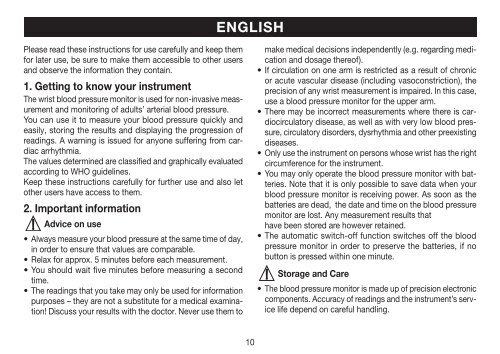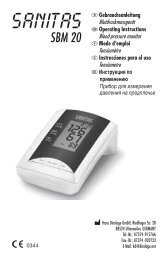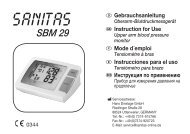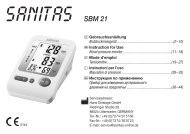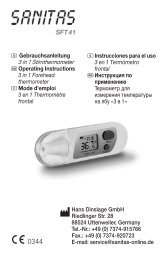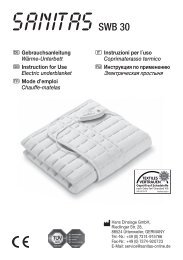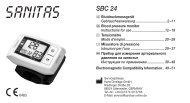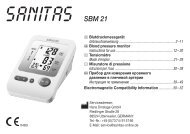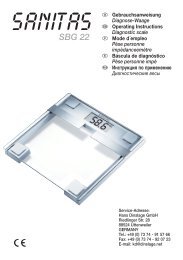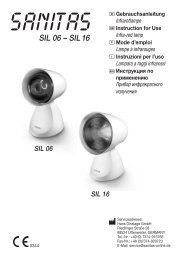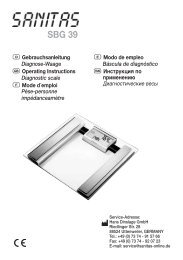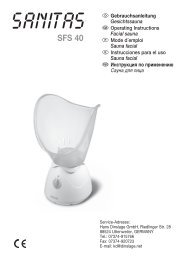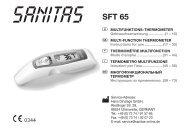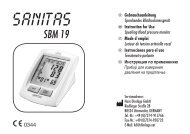EE - Sanitas
EE - Sanitas
EE - Sanitas
You also want an ePaper? Increase the reach of your titles
YUMPU automatically turns print PDFs into web optimized ePapers that Google loves.
ENGLISH<br />
Please read these instructions for use carefully and keep them<br />
for later use, be sure to make them accessible to other users<br />
and observe the information they contain.<br />
1. Getting to know your instrument<br />
The wrist blood pressure monitor is used for non-invasive measurement<br />
and monitoring of adults’ arterial blood pressure.<br />
You can use it to measure your blood pressure quickly and<br />
easily, storing the results and displaying the progression of<br />
readings. A warning is issued for anyone suffering from cardiac<br />
arrhythmia.<br />
The values determined are classified and graphically evaluated<br />
according to WHO guidelines.<br />
Keep these instructions carefully for further use and also let<br />
other users have access to them.<br />
2. Important information<br />
Advice on use<br />
• Always measure your blood pressure at the same time of day,<br />
in order to ensure that values are comparable.<br />
• Relax for approx. 5 minutes before each measurement.<br />
• You should wait five minutes before measuring a second<br />
time.<br />
• The readings that you take may only be used for information<br />
purposes – they are not a substitute for a medical examination!<br />
Discuss your results with the doctor. Never use them to<br />
make medical decisions independently (e.g. regarding medication<br />
and dosage thereof).<br />
• If circulation on one arm is restricted as a result of chronic<br />
or acute vascular disease (including vasoconstriction), the<br />
precision of any wrist measurement is impaired. In this case,<br />
use a blood pressure monitor for the upper arm.<br />
• There may be incorrect measurements where there is cardiocirculatory<br />
disease, as well as with very low blood pressure,<br />
circulatory disorders, dysrhythmia and other preexisting<br />
diseases.<br />
• Only use the instrument on persons whose wrist has the right<br />
circumference for the instrument.<br />
• You may only operate the blood pressure monitor with batteries.<br />
Note that it is only possible to save data when your<br />
blood pressure monitor is receiving power. As soon as the<br />
batteries are dead, the date and time on the blood pressure<br />
monitor are lost. Any measurement results that<br />
have been stored are however retained.<br />
• The automatic switch-off function switches off the blood<br />
pressure monitor in order to preserve the batteries, if no<br />
button is pressed within one minute.<br />
Storage and Care<br />
• The blood pressure monitor is made up of precision electronic<br />
components. Accuracy of readings and the instrument’s service<br />
life depend on careful handling.<br />
10


